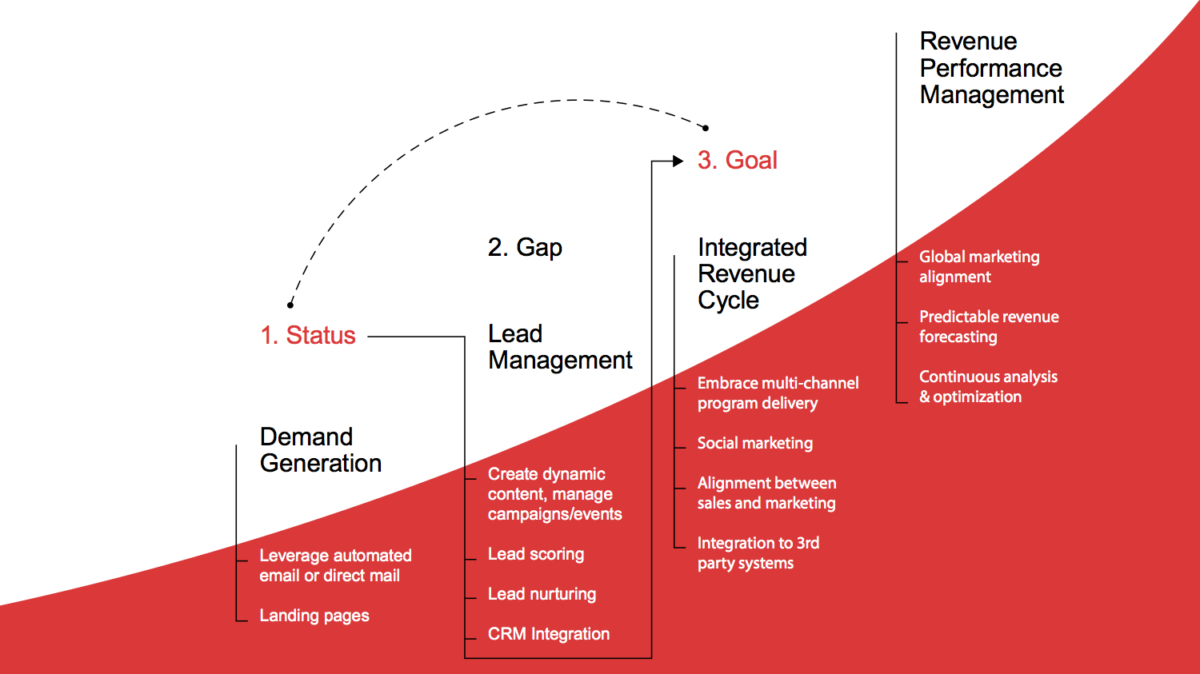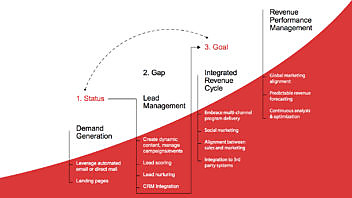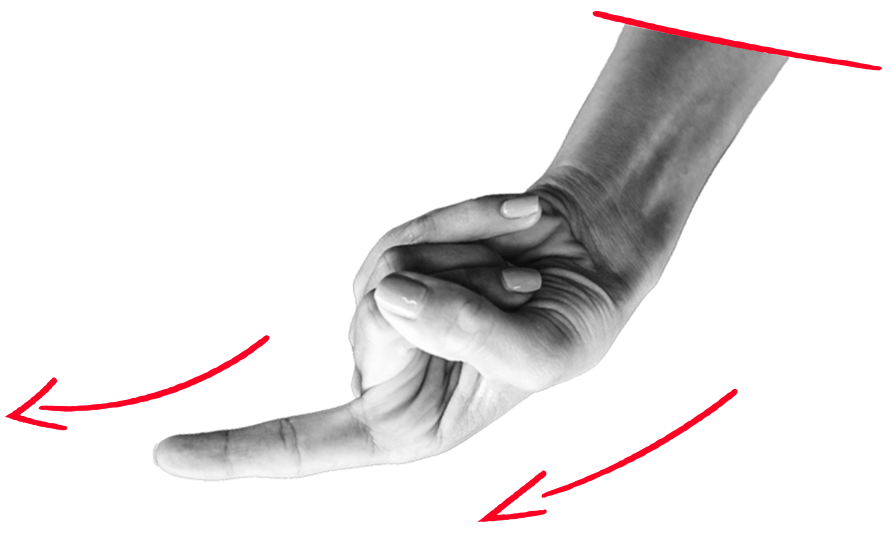Today’s commercial success seems to be defined by a relentless march (quarter-by-quarter, investment-by-investment, system-by-system) for more.
The message is simple: progress or regress. You either drive forward or stand still like a phone booth waiting to receive its first cellular call and first step to early retirement.
That’s why today’s marketers are desperate to show how we can use our shiny new technology to deliver constant progress.
And it explains our addiction (complete with all love / hate connotations) to our marketing automation platforms.
The Practice of Progress
We love marketing automation because it promises to transform our success contribution. If you haven’t imagined a management standing ovation when you roll out your creative plan to maintain that record-breaking revenue growth chart, you’re getting out too much.
We hate marketing automation because we can’t seem to realize what’s so easy to imagine.
I don’t think I’ve ever met a B2B marketer who isn’t prepared to admit, in public, some frustration about their automation journey. What do they say behind closed doors? Think Red Sox fans and poor Bill Buckner (a good player but not entirely reliable).
So what’s behind the gap between potential and reality? Answers fall somewhere between the scarcity of skills and over-abundance of Kool-Aid. But it’s really down to a modern and completely avoidable trap.
The Progress Trap
We get snagged when, generally very clever, progress solutions introduce unforeseen problems that we’ve neither the resources nor will to solve. Why? Because we think it will lead to loss in status, stability or quality of life. And – you’ve guessed it – it means true progress gets undermined.
The theory might sound more at home in a Naomi Klein lecture than a marketing automation blog. But let’s graph it against our automation maturity journey map.

The graph shows a typical client journey. And it comes with three key points:
- Current Status – Simple campaigns, email automation, lead nurturing and reporting.
- The “Gap” – Advanced customer understanding, infrastructure, integration, logic and organizational frameworks.
- Progression Goal – A strategic marketing hub that eliminates internal silos, centralizes campaign data and delivers revenue-focused reporting.
The journey to strategic marketing automation is tougher than most teams expect. And often leaves them facing two options in their bid for automation’s strategic nirvana.
Fly the Gap
- Take the path of least resistance. Move quickly to a strategic marketing hub. But expect to face issues with limited data, reporting gaps and customer knowledge longer term
Bridge the Gap
- Make the hard yards. Cover off all the bases on your way to a genuine marketing hub. But expect to face questions on progression and outcomes in the immediate future.
Our view – unsurprisingly – is flying the gap opens the progress trap. But faced with going back on progress promises, the temptation to cut corners becomes irresistible. But cut too many and your journey will never be complete. Your progress will grind to a halt.
Understand Your Start Line
When you’re focused on rapid progression, it’s easy to focus on the destination rather than the journey. But it’s important to remember that you are where you are. It’s not just about where you’d you like to be.
That’s why we recommend asking three questions about your automation journey:
- How far would I like to go?
- How far do I need to go?
- How far can I go?
We’ll explore these questions further in our next outing. See you then.

Enjoyed this article?
Take part in the discussion








Comments
Ryan Skinner Forrester May 18th, 2016
This is fantastic stuff, Neil. Talk about demonstrating expertise and delivering value.
Neil Stoneman May 18th, 2016
You can come back any time you want Ryan. Cheers dude 🙂
Adrian O’Gara OGaraCo May 20th, 2016
A central demand centre and solid demand engine is the core of any strategic marketing hub. I hope the next instalments discuss the equally important role of regional revenue centres-of-excellence where marketing, sales and services work together to execute global, integrated campaign that are relevant to the local market. Think globally, act locally – as they say.
Neil Stoneman May 23rd, 2016
Thanks Adrian. I think we might find some room to dip into the points you’ve outlined. Look forward to discussing with in more detail then.